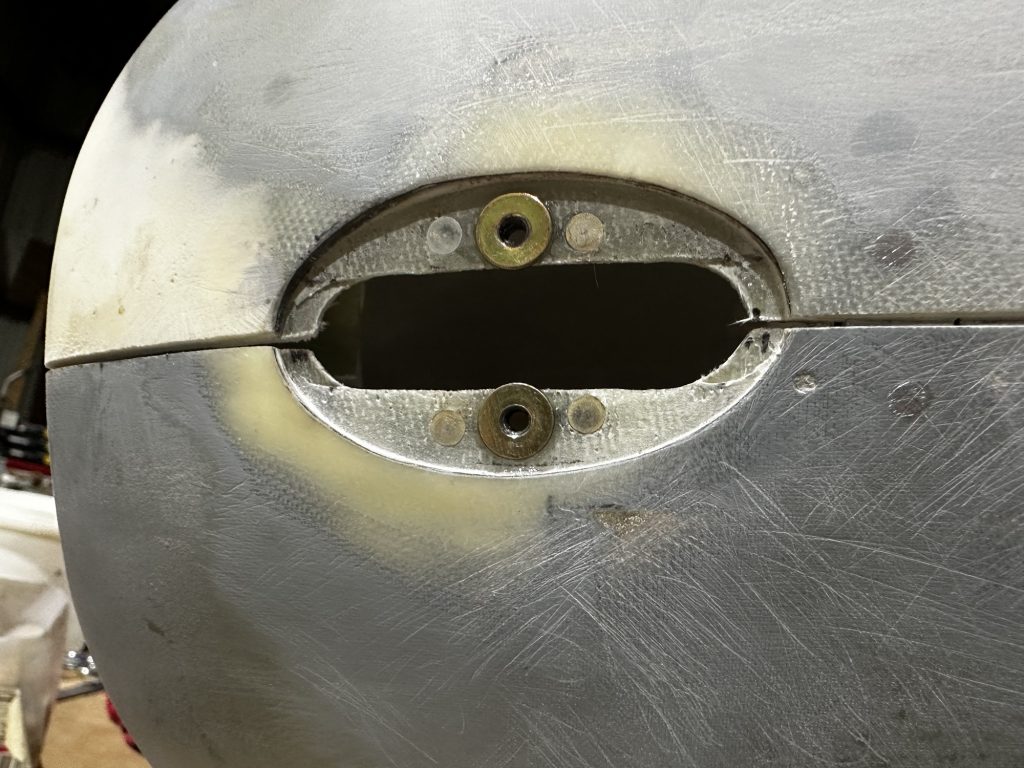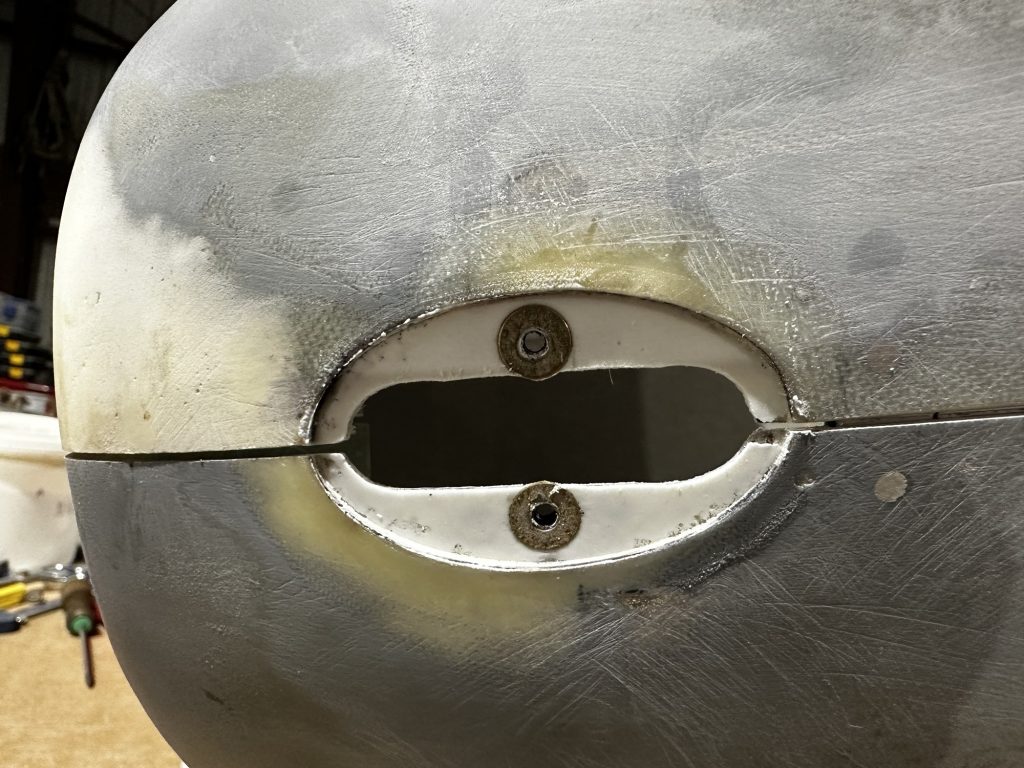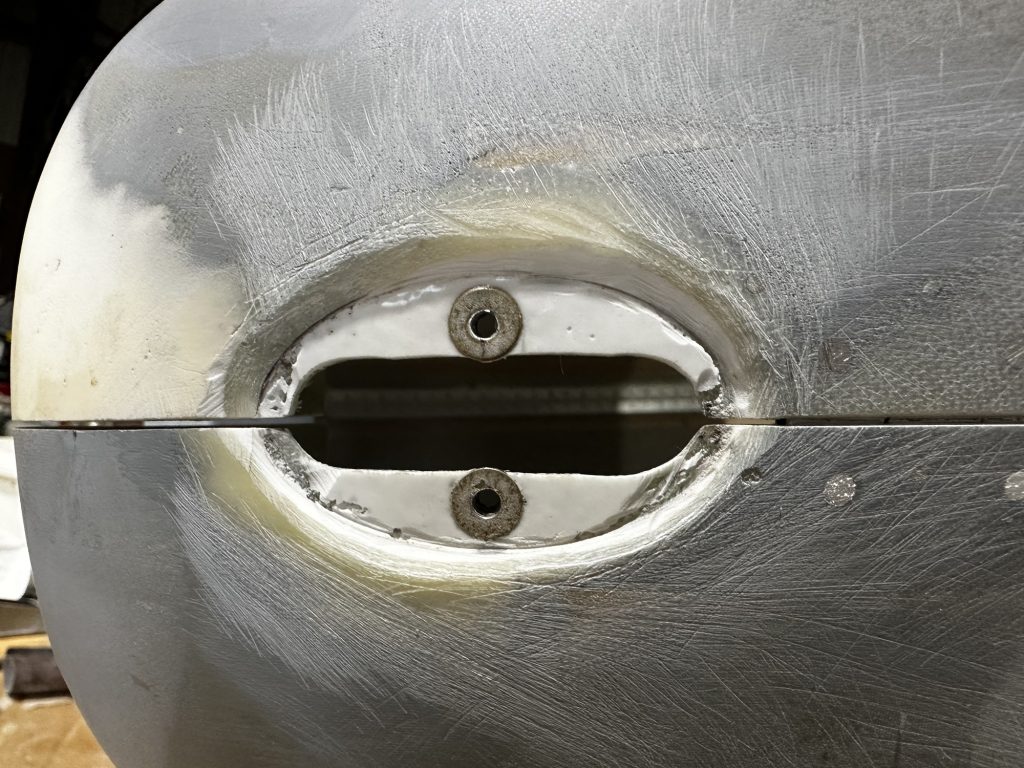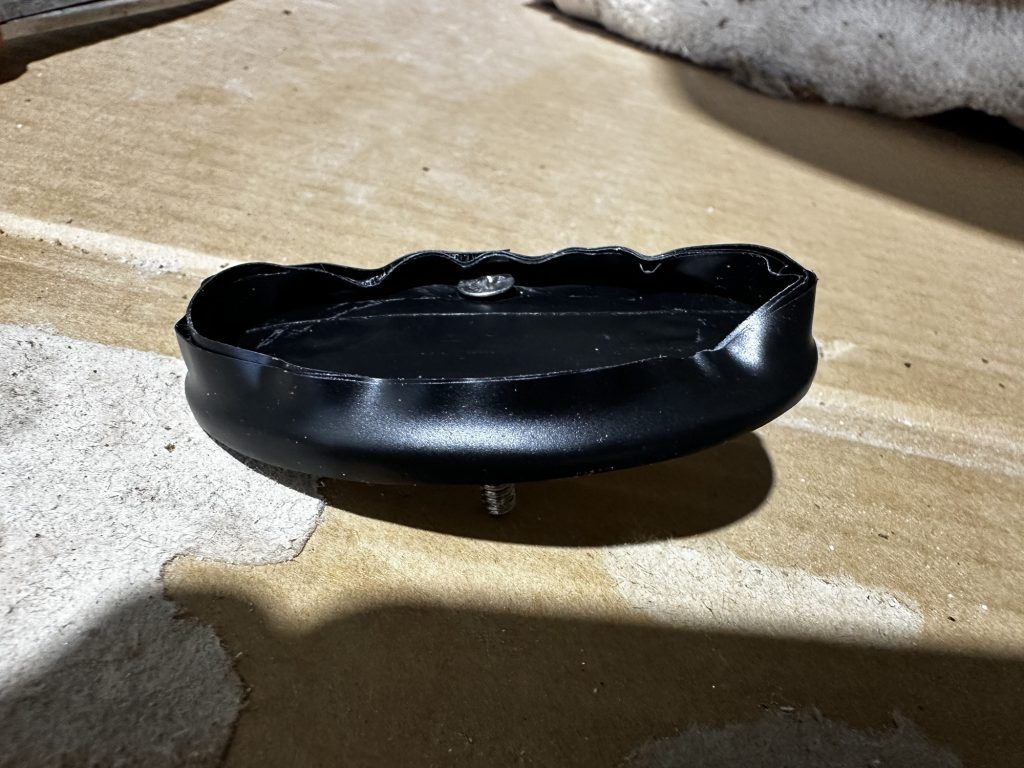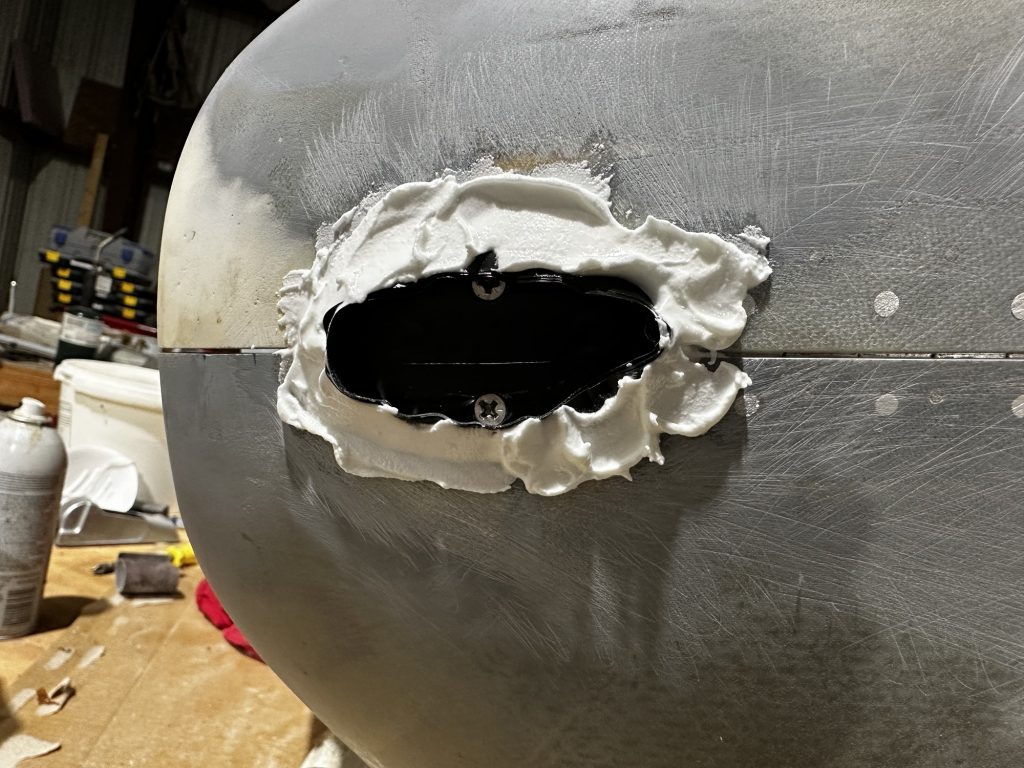Let’s see…when we last left off, I was about ready to start working on the spinner-cowl gap. I hung the cowl back on the airplane again and went to work tuning that gap. I changed my approach a bit, though…previously I was trying to work my way up to a 1/8” pice of aluminum with sandpaper glued on it, but I realized there was a better (more incremental) way. I already had a piece of .063” aluminum with sandpaper, and…well, I just started adding layers of packing tape on the back of it. This worked a lot better than trying to jump from one sanding “file” to another that was almost twice as thick.
However, I noticed an issue while working on this – I could see the upper edge of the lower cowl deforming inward when I was sanding in that area, which was working against actual sanding productivity. So I decided this was a good time to pause on the sanding and go ahead and lay up my joint flange between the cowl halves.
This ended up involving more prep work than I actually expected. First up, I revisited the gap between the cowl halves. I’d opened this gap up way back in the early fitting days, but over the course of various iterations and such it had closed up a bit, so I went back to my old technique of working sandpaper into the gap to open things up again. The next issue was to address alignment between the halves. There was still some extra material trial on the lower cow, remnants of the original flange that I cut off. I ended up doing several iterations of removing material there until the inside surface of the cowl halves mated up pretty reasonably. I didn’t want my flange layup to have to do any kind of big ugly jog. I finished up the prep last night by carefully taping up the mating area on the upper cowl.
This morning was the official layup day. I double-checked my tape job – don’t want to accidentally epoxy the cowl halves together – then joined the cowl and got it set up in place on the workbench. I did the usual fake prepreg trick here, wetting out six layers of glass between plastic, then squeegeeing the excess epoxy out and cutting out strips to lay up in the flange area. Then I stuck them in there, carefully stippled out any air bubbles, and left it to cure:

By the time I came back home from coffee with the neighbors, the glass was setting up nicely. I gave it another hour or so, then it was time for the big question: would the cowl halves separate? Good news, they did! The raw layup was pretty nasty-looking, but it needed to cure some more before I did any trimming and cleanup:

Later in the afternoon, I marked the edges and trimmed off the excess, sanded the edges to some reasonable standard of cleanliness, and match-drilled the pilot holes for the attach screws. Now I can cleco the halves together and make the prop spinner area nice and rigid:

Later in the evening, I hung the cowl back on the airplane and got back to work on that spinner gap. It continues to be tedious work, but the gap is looking pretty even now. The main thing I need to work out now is getting the upper and lower halves flush – my sanding approach doesn’t seem to be making this happen. I might need to work on that with the cowl off the airplane…
At some point I got tired of the spinner gap tedium, so I pivoted to working on cleaning up the lateral joint between the halves. Things don’t line up perfectly here, so I’ll be sanding this seam in order to make for a nice smooth transition. Here you can see where I’ve cleaned things up towards the forward end, whereas further aft it still needs more attention. Plenty more work to be done here, I’m afraid:




















